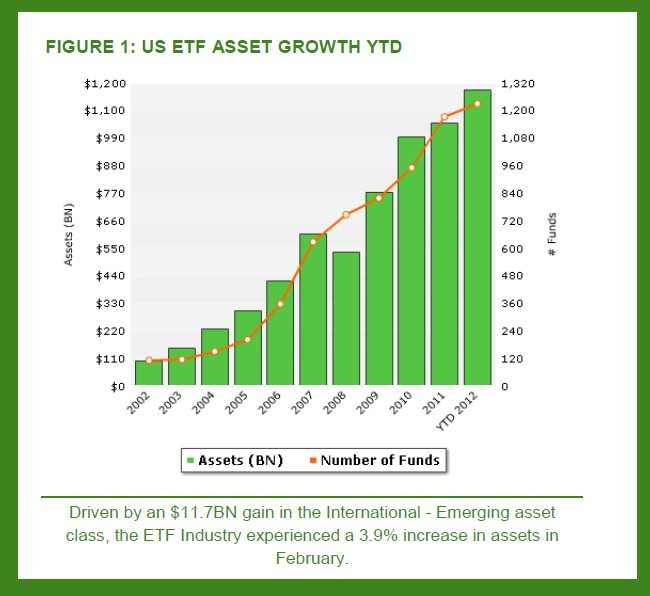ExchangeTraded Funds (ETFs)
Post on: 11 Июль, 2015 No Comment

Exchange traded funds (ETFs) are baskets of stocks or bonds that track a broad-based index sector of an INEX or stocks in countries.
ETFs are similar to closed-end funds because investors buy listed shares in the stock markets. Predominant lists are found in the American Stock Exchange (AMEX). These shares represent ownership in a stock and bond portfolio that tracks a broad index or sector indices. Investors buy and sell these shares through brokers as done with individual stocks.
ETFs are priced based on the type of stock they own besides shares supply and demand. These shares can be sold short or bought at margin accounts and could be negotiated using limit or stop market orders.
Major competence for mutual funds are ETFs. ETFs have become in very popular investment alternatives for mutual funds and for many investors that want to diversify on low cost investment options.
The regular fee charged to investors in equity ETFs is 0.4% of annual assets compared to 1.4% of assets in average mutual funds according to Standard and Poor?s.
There are more than 150 ETFs from where to choose. This number has significantly increased since the first ETF, the S&P Depository Receipts (SPDRs known as Spiders) was introduced in 1993.
Some of the most popular ETFs are SPDRs, which track the S&P 500 Index; diamonds, ticker symbol DIA, which track the 30 stocks in the Dow Jones Industrial Average; and the QUBES, ticker symbol QQQG, which track ownership in the 100 largest stock on NASDAQ.
There are a lot of ETFs that specialize in sectors of the broad indices (financial, technology and industrial for example) as well as foreign stock market indices (shares which track the Morgan Stanley Capital International Indices MSCI for 20 countries and many regional sectors around the world). Visit the AMEX website. To get information about many of the ETFs listed.
Description of Net Asset Value (NAV) implies that an ETF share price can be negotiated above or below its NAV. This discrepancy generally does not happen due to issuance of ETF of shares in kind. If in case there was a discrepancy in prices and an institutional investor would like to exploit this differential price with great block of shares ( a minimum of 50,000). The ETF trust redeems the shares with the underlying stocks in the index instead of paying in cash. Institutional investors then sell the underlying stock shares in the index and not the ETF shares to achieve the discrepant price.
This concept emphasizes similarities between the open-end mutual funds and ETFs. An ETF buys and sells shares and issues new shares when needed. However, ETF investors can buy or sell their shares at any time of the day in stock markets, on the other hand transactions in which open-end funds are implied only take place at the end of the day, at closing NAV price.
The greatest difference between open-end mutual fund and an ETF is that when shareholders in mutual funds sell their shares, the mutual funds could have to sell enough stocks as to collect enough money to pay shareholders resulting a profit of capital or loss transactions.
With the ETFs, negotiators buy shares sold by investors leaving the portfolio intact. Due to a passive ETF management, fees are low and restoration of stocks are low what (similar to mutual funds indices) results in taxes over low capital profits.














